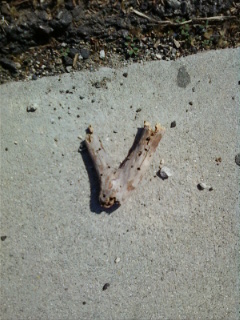NOTE: All the letters, both in their uppercased and lowercased forms, have been found and collected at this point of the semester.
This is a snapshot of a thick, blue spiral pattern of a mat that is shaped like a surfboard (the pattern probably represents a sea wave). Arguably, it resembles the form of a lowercased letter “E.” In terms of anatomy, a lowercased “E” is composed of a counter (sometimes called an eye) and a finial. Even if the spiral’s sharp interior endpoint at its center is not connected to its wavy stem, the extremity still looks like a counter. Conversely, the thick, exterior endpoint of the spiral can be considered as a finial.
This is an image of the right side of a wine opener. Whenever its handles are slightly spread, the capital letter “R” can be seen. In typeface anatomy, an uppercased “R” is formed when a vertical long stem, a slanted short stem, and an arc-shaped counter are put together (the slanted stem lies beneath the counter; both parts are on the right side of the long stem). Along with the spread right handle and its gear-shaped connector, half of the main body of the opener must be seen in order to see the letter “R.”
This is the picture of a lobby’s coffered ceiling in a Marriott hotel. The two rectangular boxes on the ceiling and the furrows surrounding them create the shape of a capital letter “H.” When it comes to typeface anatomy, an uppercased “H” is made out of two long vertical stems and a single horizontal crossbar (the crossbar is situated in between these stems and connects them). Ultimately, if there was no horizontal border between the boxes, the letter “H” cannot and will not be perceivable by the viewer.






























